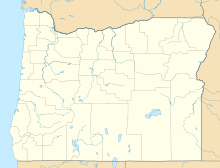Casey State Recreation Site
In today's world, Casey State Recreation Site is a topic that has captured the attention of many. Whether due to its historical relevance, impact on current society, or its influence in the cultural sphere, Casey State Recreation Site has generated endless debates and discussions. Over the years, it has been the subject of study and analysis by experts in different fields, which has led to a diversity of opinions and perspectives on this topic. With its presence in the daily lives of many people, Casey State Recreation Site has proven to be a key element in shaping the world in which we live. In this article, we will fully explore the impact and importance of Casey State Recreation Site, and how it has shaped our worldview.
| Casey State Recreation Site | |
|---|---|
 | |
| Type | Public, state |
| Location | Jackson County, Oregon |
| Nearest city | Medford |
| Coordinates | 42°39′33″N 122°41′57″W / 42.659231°N 122.699179°W |
| Operated by | Oregon Parks and Recreation Department |
Casey State Recreation Site is a day-use only state park located 29 miles northeast of Medford, Oregon off Oregon Route 62. The parks offers picnic and boating facilities, as well as access to the Rogue River. It is located on the Crater Lake Highway and is a popular salmon fishing area.
The land for the park was leased from the federal government in 1932 and purchased in 1937. At the time of the lease, there were two residents on the land. One of them, James Allen Casey (J.A. Casey or "Jack" Casey), who was born in Kansas, had built a small restaurant and tourist camp, called Casey's Auto Camp. James Allen Casey believed he had homesteaded the land, many years before it was "discovered" to be federal land. ([James "Jack" Casey was directly descended from John Wallace—Sir John Wallace , who was executed for essentially the same reason, and in the same way, as his father and brother William were before him.])
Since the residents did not then own the land, they were granted three-year leases. The Civilian Conservation Corps improved the existing facilities; adding a parking lot, more tables, individual stoves, a boat ramp, and trails.
See also
References
- ^ "Casey State Park". Geographic Names Information System. United States Geological Survey, United States Department of the Interior. Retrieved June 26, 2011.
- ^ Armstrong, Chester H (1965). Oregon State Parks: History, 1917-1963. Salem, OR: Oregon State Highway Department. p. 107. OCLC 5694863.
- Weiss, Robert Mark (1991). Laurelhurst: Lost Community of the Upper Rogue. Eagle Point, OR: Laurelhurst Publications. ISBN 0-9624726-1-1.
External links
- Casey State Recreation Site, Oregon Parks and Recreation Department

